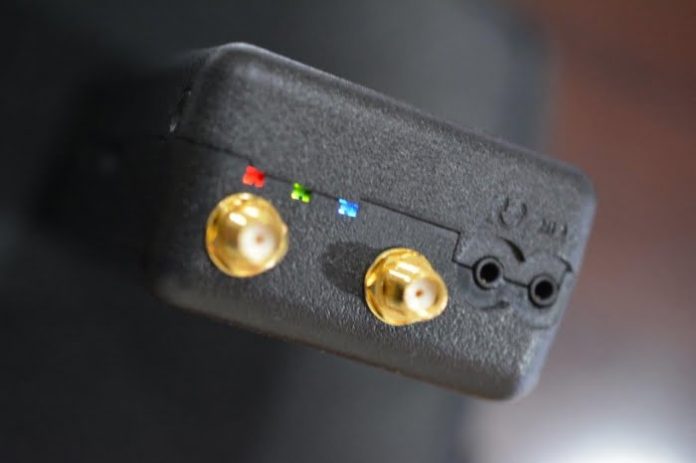Infodraw’s tiny AVL-2 is a mobile low-power cellular media relay that allows live streaming, recording and monitoring of video, audio, alarm inputs and GPS location.
AVL-2 from Infodraw, distributed locally by Conceptual Technology Solutions, is an interesting animal. The unit is a palm-sized, portable multimedia streaming and monitoring system that comprises embedded hardware and software combined with built-in cellular network interfaces. At a surprisingly low cost you get a professional grade video, audio and alarm input monitoring solution with GPS, that is highly mobile yet leaves nothing out.
The AVL-2 unit can be carried, installed in vehicles or at fixed locations. Once installed and configured, AVL-2 allows users to stream live video/audio/location from anywhere over wireless cellular networks (4G/ 3G/ HSPA/ EDGE/ GPRS) or LAN. Units can be monitored and controlled from any location on alarm event or request using fixed/mobile control centres, mobile phones/PDAs or an internet web client.
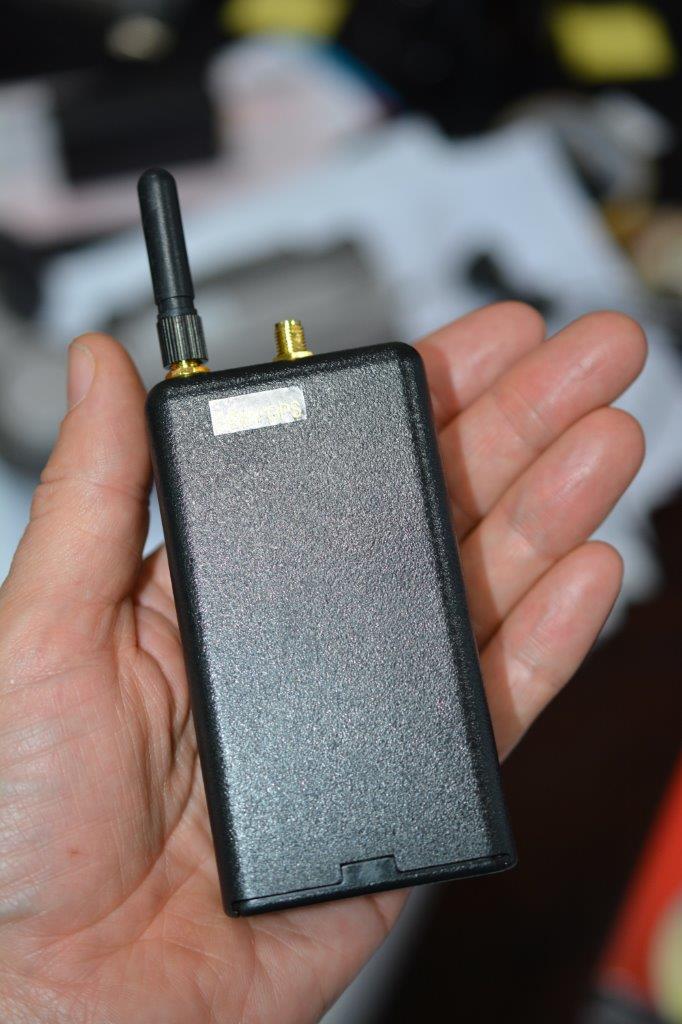
The first thing that hits you when you get hold of the AVL-2 is that it’s tiny – just 5 x 10 x 2.8cm with a weight of only 130g. Important for a mobile device, it has decent heat tolerance of -10C to +60C and it’s tough. The other thing you notice is that despite its compact size, AVL-2 is a sock puppet for functionality.
There’s onboard storage, an integrated GPS, 3 alarm and 4 outputs, 2 analogue camera inputs and 1 x USB, a serial port offering support for PTZs using RS232 or RS485, a built-in advanced 4G/3G cellular modem and GPS receiver, a built-in rechargeable battery giving up to 5 hours of independent operation, and a 5VDC Power output for miniature covert cameras.
The attention to detail goes way under the skin. There’s cellular router functionality for third party connecting equipment, a high performance DSP, an H.264 CODEC handling dual encoding per channel, a sleep function to extend battery life and all comms are secured using IPSEC RSA 1024-bit encryption and Open VPN. In terms of the fundamentals video resolution is CIF/D1 and the video bit rate is 10kbit/s to 2Mbit/s at a frame rate of up to 25/30 fps, depending on network quality.
As well as handling video and audio, AVL-2 has 3 input and 4 output ports and it’s the clever way these inputs and outputs can be set up that gives you the clearest idea of the level of serious thought that’s gone into the product. The designers of AVL-2 were not mucking around. There’s configurable alarm event triggers include accelerometer, magnetometer, VMD, GPS-based virtual fence, 3 digital inputs (NO/NC) and a duress button. This is all beautiful stuff for a mobile or wearable solution and allows for very flexible applications.
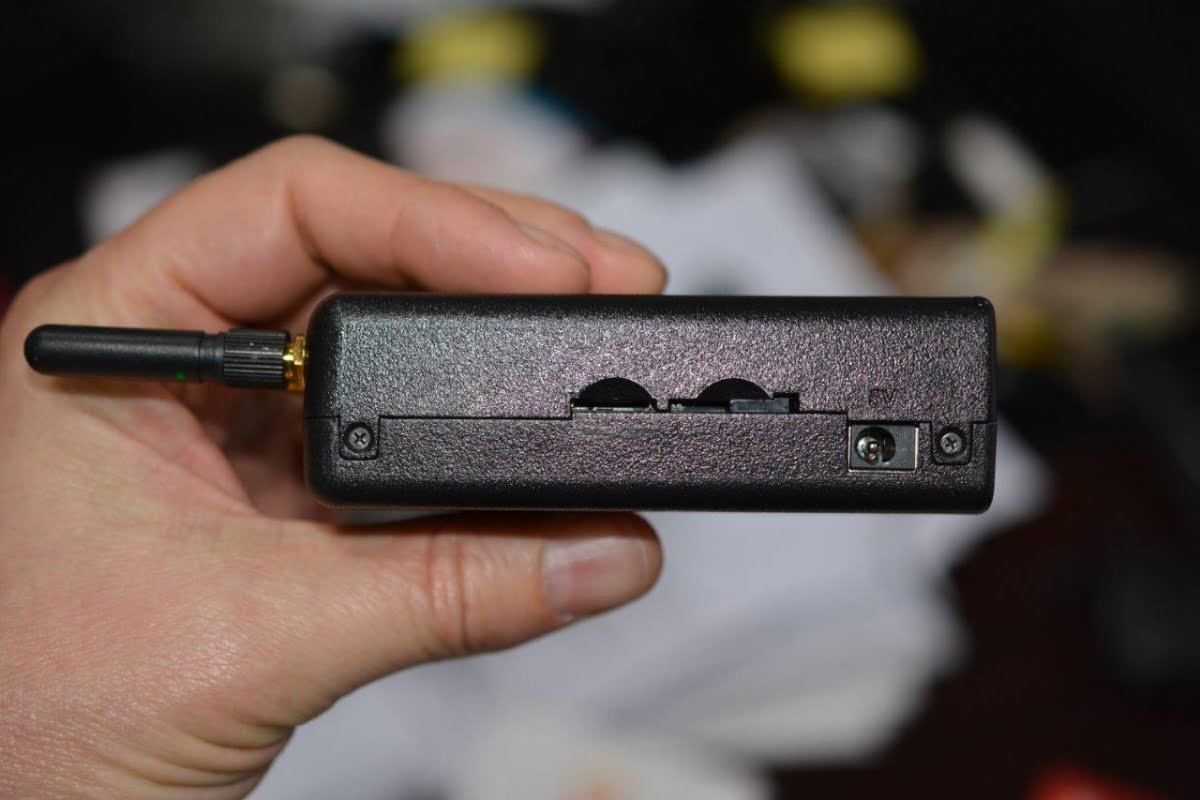
AVL-2’s GPIO ports are at TTL level. The first input port is the alarm button which is imbedded in the side of the device and you access the other ports through the GPIO/PTZ cable wires. These GPIO ports can be set up to trigger a variety of events including live video streaming, video/audio recording, GPS tracking etc. The unit can also send a SMS to any number of phones as a result of a GPIO alarm settings trigger.
When it comes to output switches, the AVL-2 unit has 4 GPIO output switch ports and external peripheral devices (such as alarms, external sirens) can be connected to these output ports and then set to trigger a variety of actions once activated.
The excellent management software suite gives client and device support and supports setup and live monitoring of video, audio and location from multiple AVL-2 devices. Managing the show is MRS Monitor Client Application that’s used for connecting to the server to monitor and control AVL-2 units.

This is the application through which you watch video, listen to audio and monitor the location of your AVL-2 devices. In this application you also change the parameters of the video and audio and view recordings you have made. The software allows position tracking with live and recorded data map-based view, and there’s good user access and control permission management, as well as on-the-fly cellular remote device configuration.
There’s server and client modules for Windows PCs, as well as Android and Apple IOS mobile clients. Rounding out the software suite is the AVL-2 Player Application is used for viewing recorded video/audio files, verifying digital signatures on recorded files and decrypting recorded files – you use it to view specific event recordings you’ve downloaded for the purposes of investigations.
Sitting down with AVL-2 is instructive. While the hardware is compact, there’s absolutely nothing small about the MRS Monitor Client application. In some ways this client seems more complete than many VMS solutions – probably because of the integration of alarm events and mapping. It’s a typical Windows look with a directory on the left hand side of the screen that’s amazingly comprehensive.
The directory is your entry point into AVL-2 and it gives you access to functionality like audio, alarm inputs, GPS location, VMD settings, video settings, audio settings, recordings, display of all linked AVL-2 units, network data, device temperature and battery state. There’s much more – all the unit’s many functions have their front doors in this directory.
The main part of the screen when set to display 4 tiles is taken up by a camera view on the left hand side, and a GPS locater map on the right – this means operators can look at image streams from a vehicle or a worn camera, talk to an operative in the field and/or listen to conversations and environmental noises, while tracking the exact location of the AVL-2 on a map.
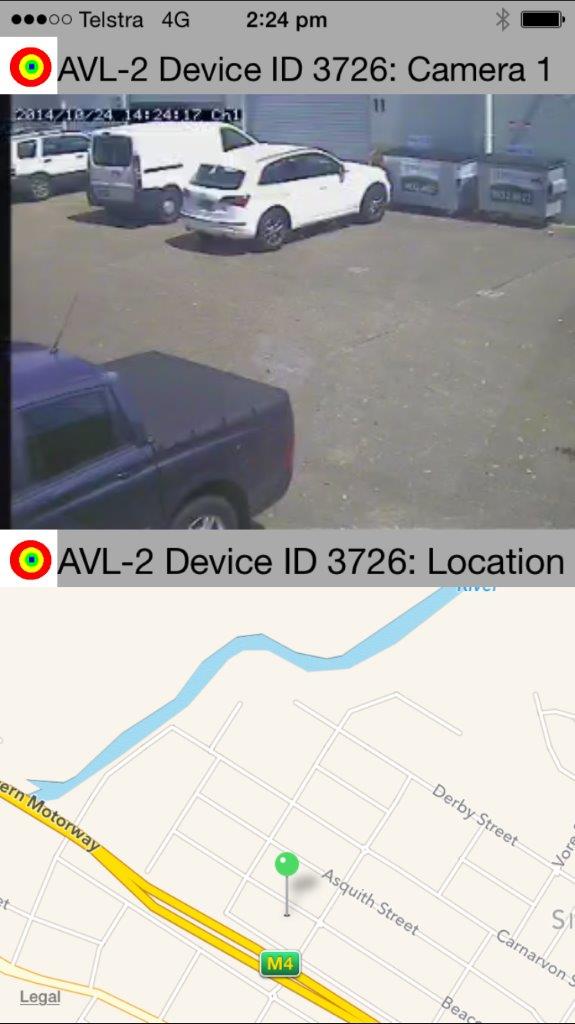
This applies for each AVL-2 unit linked to the client application and the viewing area can be split into 1, 4, 6, 9, 12, 16 or 20 viewing channels, so considerable expansion is provided for. Further empowering real time operations, underneath the viewing screen is a simple chronological event log displaying alarm events. Given the accelerometer allows man-down applications and there are multiple digital alarm inputs, there’s a lot of value here for very little cost.
From the point of view of setup, the unit must be configured prior to operation. The unit is configured using the Device Configurator software, by connecting a USB cable between the unit and a computer (XP or higher). The unit also has 4 dip switches used for setup and operation, located on its side.
The setup process includes pointing the unit’s connection settings to the IP address of the server. And the unit’s cellular connection settings must adhere to those of the cellular provider in use, with the cellular provider’s APN (Access Point Name) provided.
MRS Server (Windows Service Program) is a Web Admin Interface program used for setting up your server for AVL-2 units to connect to, setting permission and access levels for connecting clients and configuring a variety of other settings in the server. With this program, the server’s settings can be accessed and changed from any location, using the web.
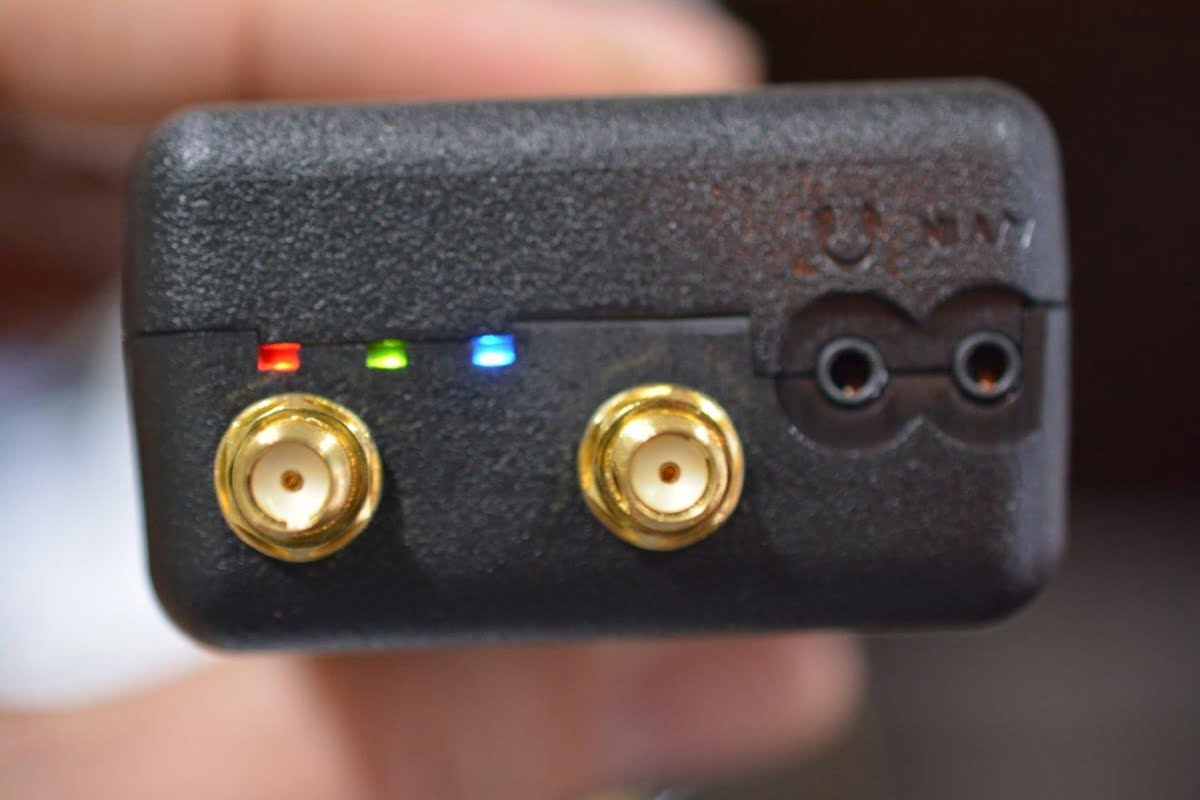
When it comes to the AVL-2 device, you need a SIM card (data only) from a cellular service provider to provide communications for the unit. The AVL-2 supports any 4G/3G/HSPA/EDGE/GPRS SIM based cellular providers. Any 2 analogue PAL/NTSC camera can be connected to the AVL-2 unit. Neat for covert or wearable applications, the unit’s battery can feed power to a 5V camera. Meanwhile, a Class 10 Micro SD Cards (SDHC) up to 64GB is required if you want to record onboard the AVL-2 device.
Bandwidth demand numbers are 1 channel at 100kbit/s uses 1.08 GB per day, and 32.4 GB per month, 1 channel at 200kbit/s uses 2.16 GB per day and 64.8 GB per month, 1 channel at 300kbit/s uses 3.24 GB per day and 97.2 GB per month, and 1 channel at 400kbit/s uses 4.32 GB and 129.6 GB per month. The AVL-2 has automatic bandwidth control which will automatically reduce the bit rate and frame rate of the video channel, if they are set too high for the mobile network bandwidth to manage.
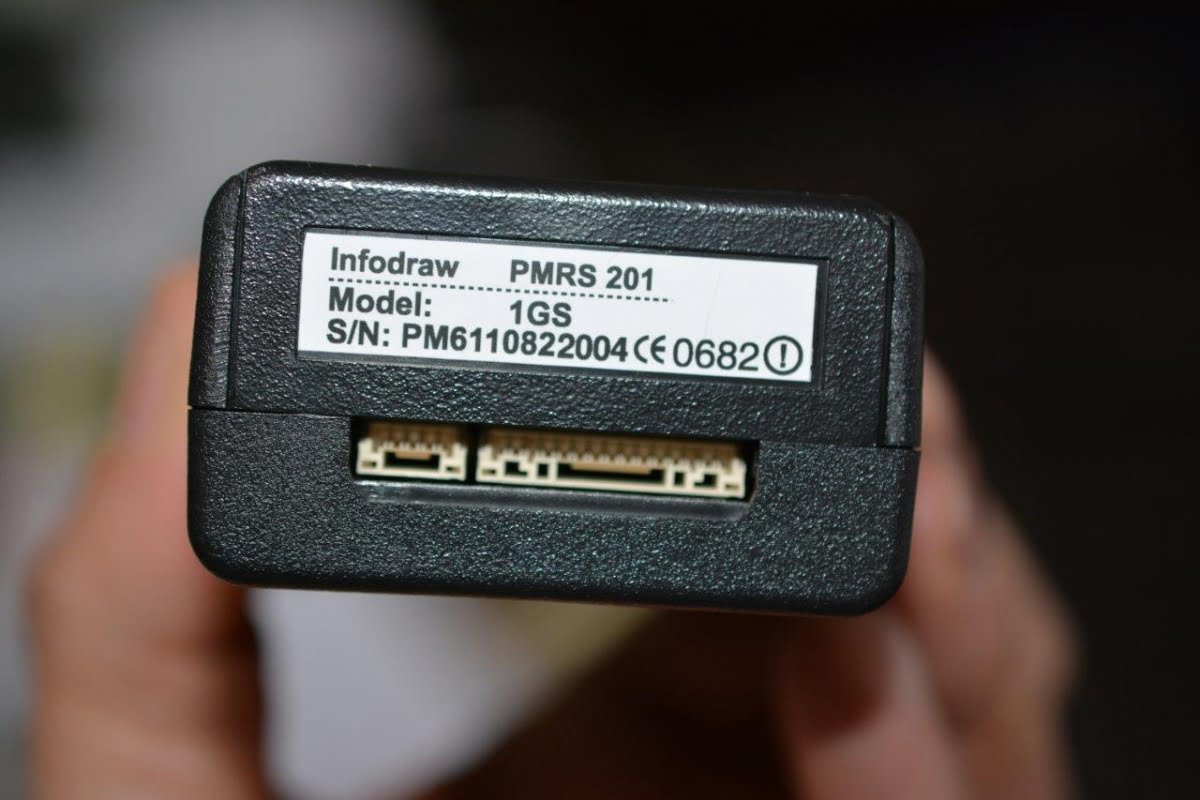
AVL-2 is a solution that’s perfect for law enforcement agencies as a mobile, worn or carried video and audio solution. But the applications go deeper than that. It’s capable of handling quick deployment in public surveillance applications, taking on challenging applications like providing coverage for special event, supporting covert surveillance and resolving topical mobile or remote monitoring challenges of all sorts. From top to toe, hardware and software, AVL-2 is very nicely done.
Features of the AVL-2 include:
* 2 Video Inputs
* USB Camera input
* Audio input
* 3 alarm inputs and 4 outputs
* CIF/D1 resolution at 25/30ips
* PTZ camera support via RS232/485 port
* Tiny wearable form factor
* Server and client modules for Windows PCs
* Android & Apple IOS mobile clients
* Position Tracking with live and recorded data map based view
* Comprehensive user access & control permission management
* On-the-fly cellular remote device configuration.
Distributor: Conceptual Technology Solutions
Contact: +61 2 9144 6924 +61 0423 097 632




